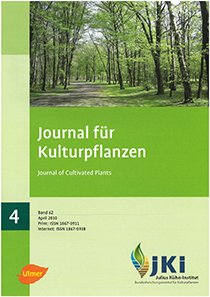Julius Kühn and cultivated crops: A historical review of his work commemorating the 100 anniversary of his death
Keywords:
Ditylenchus dipsaci, fungal pathogens, Rhizcotonia solani, beet replant diseaseAbstract
On April 14, 1910 the farmer and scientist Prof. Dr. Julius Kühn passed away in Halle, Germany. His enormous scientific productivity and creativity along with his ongoing enthusiasm and kind-heartedness made him an outstanding personality and an archetype for thousands of his students which called him fondly “Father Kühn”. He established agricultural sciences at the university, co-launched the “Institute for inspection of agricultural machinery and equipments”, postulated the need for phytopathological Institutes – such as the Julius Kühn-Institut – and established the “Experimental Station of Nematode Control Halle”, predecessor of the Plant Protection Service in Germany. Hence, Julius Kühn created the infrastructure to study the mechanisms of modern agriculture, develop solutions and established them in praxis. Unlike any other person, Julius Kühn promoted agricultural development in Germany. He established modern field experimentation, introduced the drill seed technology in Silesia, discovered the beet cyst nematode as origin of the beet replant disease and described important plant pathogens such as Ditylenchus dipsaci and Rhizoctonia solani. His great work Die Krankheiten der Kulturgewächse, ihre Ursachen und ihre Verhütung is considered to be the first text book in phytopathology worldwide. Today, his work is continued by several institutions such as the Julius Kühn-Institut, Federal Research Institute for Cultivated Plants, which is carrying on his name. The 100 year anniversary of his death is commemorated by reviewing some of his pioneering research on cultivated plants.
DOI: 10.5073/JfK.2010.04.01, https://doi.org/10.5073/JfK.2010.04.01








